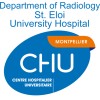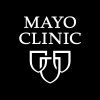
Investigation of Therapeutic Efficacy and Safety of UMSCs for the Management of Retinitis Pigmentosa...
Retinitis Pigmentosa (RP)Retinitis pigmentosa (RP) is the most common hereditary retinal disorder (accounts for 20% of children attending blind schools in Pakistan) which causes degeneration of rod and cone photoreceptors. Rods and cones largely depend on the retinal pigment epithelium for their proper functioning. Various growth factors and their receptors are present in retinal epithelium and a number of genes are responsible for the production of these growth factors. Genetic mutation in any of these genes causes retinal degeneration by progressive loss of retinal pigment epithelium and photoreceptors. The disease initially starts with night blindness and leads to the loss of central vision and eventually total blindness. To date, there is no definitive cure for patients suffering from RP. Recently, stem cell based therapies have shown great promise for the management of RP. It is well documented that umbilical cord derived mesenchymal stem cells (UMSCs) have the ability to release various paracrine and immunomodulatory factors that are similar to those synthesized by retinal pigment epithelium. Multiple routes including systemic (intravenous) and localized (subretinal, intravitreal, suprachoroidal and sub-tenon) have been employed to administer UMSCs for the management of RP. It is important to note that deep sub-tenon region (space between the sclera and the conjunctiva) acts as both natural culture medium for cells and as immune privileged site because of avascularity of the region. It has been reported that the injection of UMSCs in sub-tenon space of human subjects have improved the visual acuity even after 1 year post-injection. In addition, the injection of UMSCs in suprachoroidal space enhances the entry of growth factors released by the cells into choroidal flow and maintain the constant growth factors secretion to the choroidal and retinal tissues. Limoli and colleagues were the first to report the suprachoroidal administration of cells being the safe mode of cell delivery with no complications. The present study is aimed to investigate the safety and therapeutic efficacy of UMSC injection employing two different routes (sub-tenon injection versus suprachoroidal injection) for the treatment of RP in human subjects.

A Study of Cidofovir in the Treatment of Cytomegalovirus (CMV) of the Eyes in Patients With AIDS...
Cytomegalovirus RetinitisHIV InfectionsIncomplete Closed Protocol

Autosomal Dominant Retinitis Pigmentosa: Prevalence of Known Genes Identification of New Loci /...
Autosomal Dominant Retinitis PigmentosaIdentify new genes responsible for autosomal dominant retinitis pigmentosa (ADRP), one of the most common causes of hereditary diseases of the retina, and thus better understand the mechanisms involved of the disease."

Argus II/ORCAM Device Study
Retinitis PigmentosaThis study is being done to determine if wearable text-to-speech (TTS) and visual pattern recognition (VPR) technology can be used to extend the capabilities of the Argus II to allow patients to read and recognize faces and objects. The Argus II retinal prosthesis can restore rudimentary forms of vision to patients with bare light-perception vision. Using the prosthesis, patients can identify obstacles, handles, switches, eating utensils and demonstrate improved navigation when used in conjunction with other ambulation-assist tools. Current limits in the resolution of the device prevent useful reading or face recognition. The FDA has approved the Argus II as a humanitarian device. Present-day wearable text-to-speech converters are also capable of object and face recognition. Such systems have been developed to assist with these tasks in patients with severe low-vision. ORCAM is a commercially-available eyeglass-mounted visual pattern recognition system capable of converting photographs of text to speech. It is comprised of a camera, a small belt-worn computer, pattern recognition software and a small audio transducer. ORCAM can acquire the image of a sheet of paper and read the text to the user through a small speaker adjacent to the ear. In addition, ORCAM can be trained to recognize faces and speak the name of the individual to the user. ORCAM can also be used to recognize everyday products after being programmed.

Pupil Dynamics and Color Vision for the Detection of Eye Diseases
Retinitis PigmentosaLeber's Hereditary Optic Neuropathy1 moreThe development of new oculometry techniques allows fine and dynamic measurements of pupillary diameter and use in routine clinical practice. The preliminary results obtained with innovative devices on healthy sjuets make it possible to envisage a clinical study on a population of patients suffering from retinal pathologies. This is a "proof of concept" study, which, if the expected results are confirmed, will make it possible to consider a study on a larger population, as well as the industrial development of a commercial device.

Natural History of the Progression of X-Linked Retinitis Pigmentosa
X-Linked Retinitis PigmentosaThe objective of the study is to gain a better understanding of disease progression over time in participants with X-linked retinitis pigmentosa (XLRP).

Longitudinal Study of Ocular Complications of AIDS (LSOCA)
HIV InfectionsAcquired Immunodeficiency Syndrome1 moreTo monitor trends over time, in the incidence of CMV retinitis and other ocular complications of AIDS To determine the effect of highly active anti-retroviral therapy (HAART)-induced immune status on the risk of developing CMV retinitis and other ocular complications of AIDS To determine the characteristics (clinical, virologic, hematologic, and biochemical) of a population at high risk for CMV retinitis and other ocular complications of AIDS To evaluate the effects of treatments for CMV retinitis and other ocular complications on visual function, quality of life, and survival.

Post-Market Study of the Argus® II Retinal Prosthesis System - France
Retinitis PigmentosaThis is a post-market study of the Argus II Retinal Prosthesis System. The study is being conducted in France. The objective of the study is to obtain data to further demonstrate the effectiveness and evaluate the safety of Argus II System in patients with retinitis pigmentosa who have a bare light perception or worse in both eyes.

Collision Warning Device for Blind and Visually Impaired
HemianopiaHemianopsia4 moreThis study evaluates a novel collision warning device to help people with severe vision impairment or blindness avoid collisions with obstacles. The main hypothesis to be tested is that the device reduces the number of collisions with obstacles in everyday activities.

Retrospective NIS to Evaluate the Patient Benefit of TES
Retinitis PigmentosaIn this retrospective non-interventional study (NIS), the subjective and objective benefit of patients with retinitis pigmentosa (and other dystrophies like Usher, Choroideremia or cone-rod dystrophy), who have been prescribed the therapy of transcorneal electrostimulation (TcES) with the OkuStim System, is assessed.
